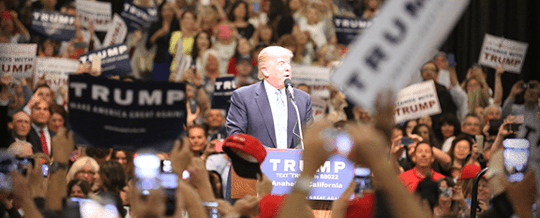The Real Reason for the Trump Rally?
We like to nose around obscure crannies of the financial press.
Among these lonely crags, we find rare clues, half-buried pearls… far away from the Page 1 hustle and bustle.
It is here that we chanced upon a neglected aspect of the looming debt ceiling deadline… but an aspect with potentially large ramifications…
It suggests the post-election Trump “reflation trade” may have been not a sign of economic vigor but a phantom rally, wispy as the morning fog and about as lasting.
More on that anon. But first a check of the markets…
Another red day on Wall Street. The Dow’s down 69, to 20,855. The S&P’s off five points. But take heart — the Nasdaq’s up… three whole points.
Oil’s off three bucks. And gold’s down about eight, probably on word that fed funds futures are now suggesting a 100% chance of a rate hike next week. Why 100%?
New data from ADP Research indicate the private sector added a thumping 298,000 jobs in February. The sages and soothsayers hazarded only 190,000.
It seems only an act of the Big Fellow himself could stop a rate hike now.
But maybe Ms. Yellen and co. should gander a report by Gavekal Capital: “A Massive Liquidity Illusion.”
The report suggests this massive liquidity illusion is a “really important element missing from this [mainstream] analysis.” And it could “change very quickly over the next several weeks.”
Their argument is this:
To prepare for the March 15 debt ceiling, the Treasury’s been drawing down its deposits held at the Federal Reserve.
In 2015 — the last time the debt ceiling was suspended — Congress passed a law prohibiting the Treasury from squirreling away large cash reserves to prepare for the debt ceiling. A large cash reserve could keep the Treasury in funds for months and months, dragging the thing out.
And since November, reads the report, U.S. Treasury deposits at the Fed have dropped from over $400 billion to about $175 billion. Just as the law required.
Further driving home the nail: “To be clear, the increase in bank reserves is entirely a function of the U.S. Treasury making preparations to hit the debt ceiling in the next couple months.”
But what does all this have to do with the Trump rally? This:
The report says the process has unleashed over $200 billion of liquidity into the markets these past few months — a smaller-scale round of quantitative easing.
That rising tide of liquidity “has served to create the appearance that the Federal Reserve has been easing lately.”
Even though it hasn’t.
“The net effect of this,” concludes the report, “is an unintended liquidity injection into the economy.”
The Dow’s up a meteoric 3,000 points since the beginning of November — among its most dramatic three-month runs ever.
Coincidence? Maybe. Maybe not.
But what happens when a new debt ceiling deal is reached? Reads the report:
Let’s say the debt ceiling is raised and the U.S. Treasury wants to rebuild its account at the Fed [as it did after the 2011 debt ceiling crisis]. The U.S. Treasury will then issue a bunch of bonds, stick the proceeds at the Fed and basically remove several hundred billion in liquidity from the markets. This will manifest itself in lower commercial bank deposits at the Fed and a reduction in banking liquidity.
That is, it could shatter the liquidity illusion… the illusion that may have been floating stocks these past few months. And:
“Experience over the last few years is that each major reduction in commercial bank reserves leads to… a stumble in stocks.”
But experience runs a hard school, as old Ben Franklin said. “Fools will learn in no other.”
Something else about fools: They’re soon parted from their money. And if this report is right maybe sooner than they realize…
Regards,
Brian Maher
Managing editor, The Daily Reckoning



Comments: